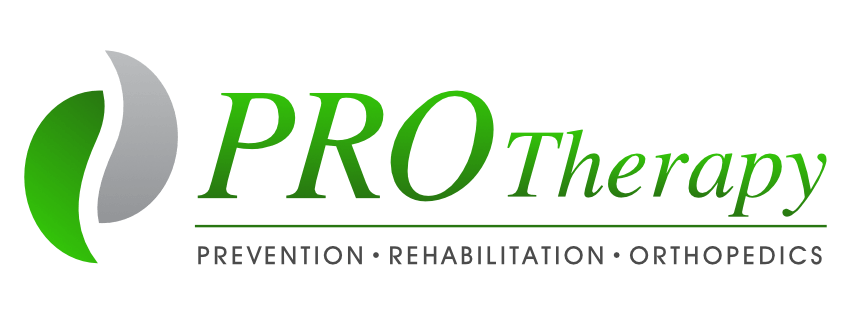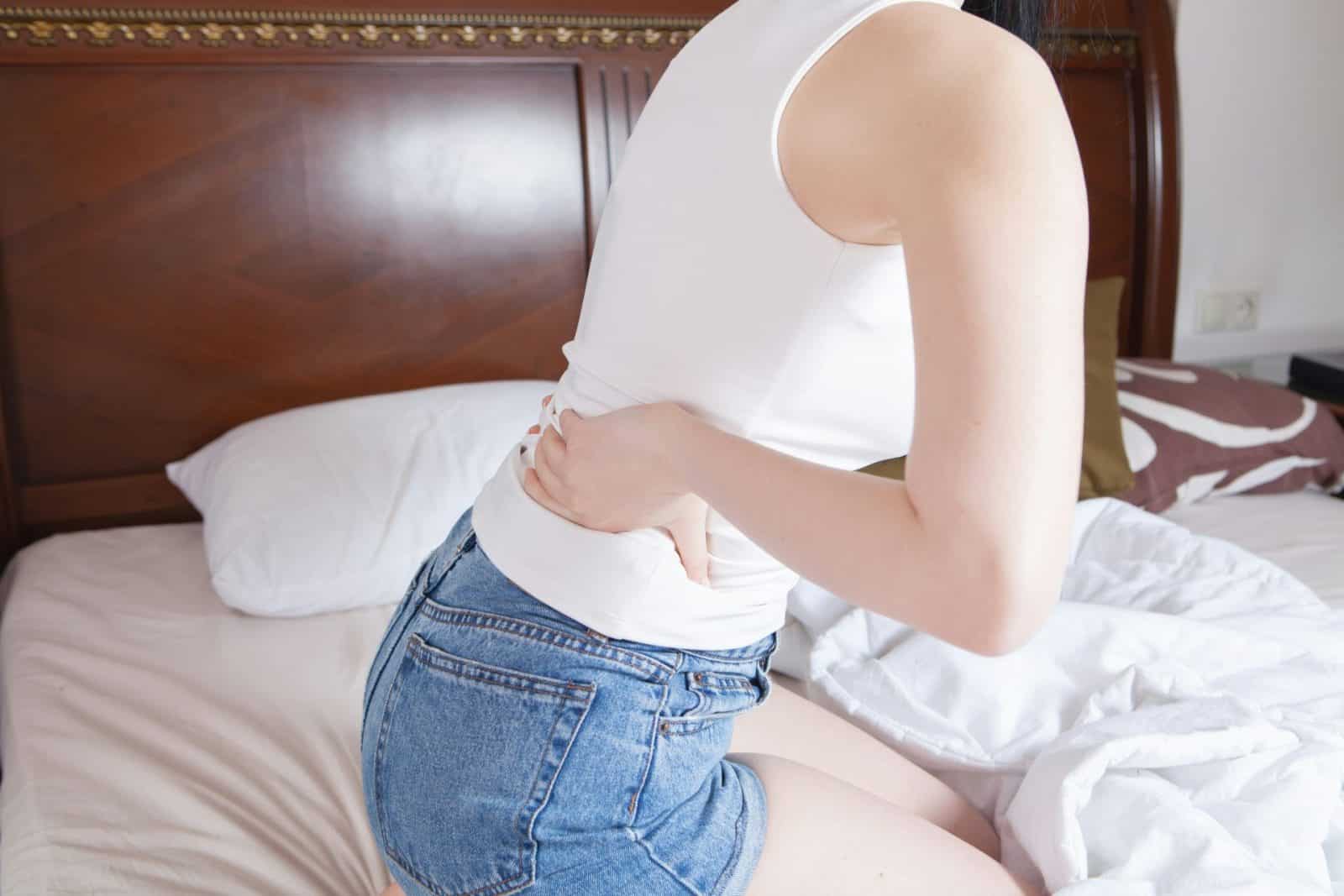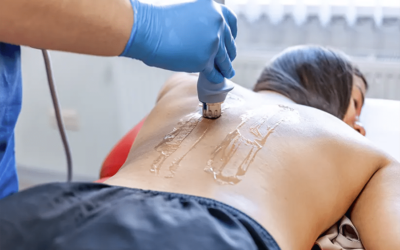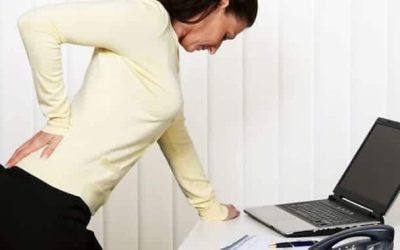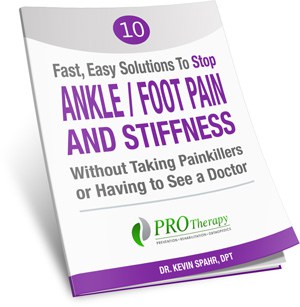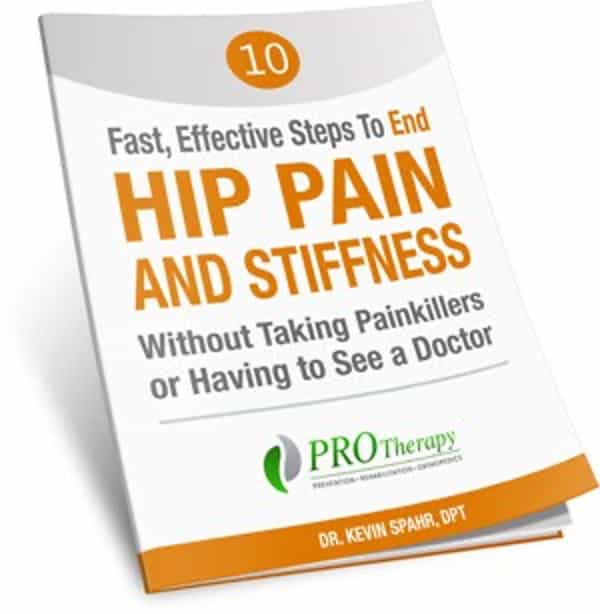Does low back pain constantly get in the way of your daily activities? If you find yourself stiffening or aching as you get out of bed in the morning and throughout the day, you’re not alone. A whopping 1 in 6 people experience lower back pain every year and another third of them have a recurring problem.
But the good news is that 98% of lower back pain is treatable with physical therapy. With years in the industry, our team at PRO Therapy has some advice to keep the ailment at bay. So, keep reading to learn more about the subject and access our favorite PT low back pain relief tools.
The Backstory of Lower Back Pain
Who Is Affected by Lower Back Pain?
According to the World Health Organization (WHO), lower back pain can happen to anyone, and most people experience it at least once in their lives. However, adults suffer from the problem more than kids, women are more prone than men, and the age group with the highest risk is over 80 years old. Note that the symptoms peak between ages 50 and 55. With that being said, anyone can experience back pain. So, how do you find a good lower back pain relief tool? Learn about the why behind back pain before exploring the top solutions recommended by PRO Therapy below.
How Does Lower Back Pain Start?
Lower back pain stems from a variety of reasons: bending forward to pick up an object, twisting to get in or out of a car, performing a squat in the gym, a long day of picking up objects at work, or even a trip to the golf course to name a few.
Related Content: Low Back Pain & MRI Results: Here’s What You Should Know
Daily movements and new activities can stress the lower back when your body isn’t used to moving a certain way or with repeated movement. But keep in mind that the movement itself isn’t dangerous. There are a multitude of factors that play a role; It may have been a history of repetitive movements, too heavy of a single movement for our back to handle, or a change of direction that the body wasn’t prepared for.
Acute vs. Chronic Back Pain
Back pain comes in different time frames. Acute back pain occurs quickly, or rapidly, while chronic back pain is a long-standing history (months to years) of back pain that is there for the majority of days/weeks. Chronic back pain can also have acute “flare-ups”, where the pain is worse than a typical day for days or weeks.
Lower Back Pain Symptom Classification
Many types of acute onset lower back pain have different symptom classifications:
- Mobility deficits (stiffness)
- Radiating pain (pain down the leg into the calf or foot)
- Referred pain (vague pain in the hip, thigh, calf, or foot)
When lower back pain occurs, these classifications may be completely separate or muddled together. These types of lower back pain can be caused by different structures and movements of the lower back and can be related to muscles, joints, nerves, and intervertebral discs.
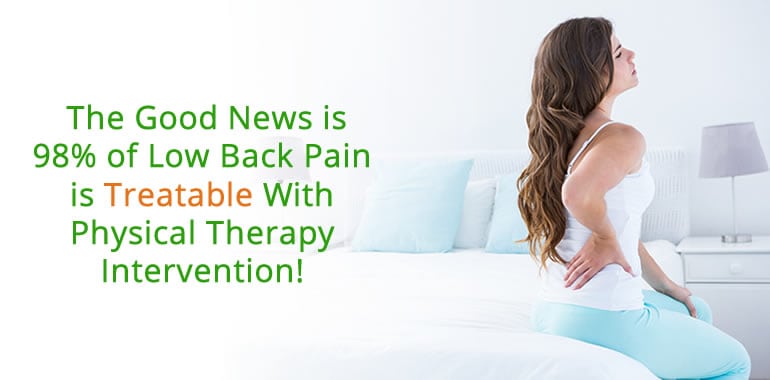
Lower Back Pain Relief Tools NOT to Use—At First
Once you discover a need to fix your acute or chronic back pain, you might be tempted to use the solutions we list below. However, fixing back pain is simpler than you think. Learn what lower back pain relief tools to skip until you’ve tried some less invasive solutions first:
- Don’t go to the emergency room. Yet. Unless there’s a serious emergency, chances are that PT will be a faster, easier, and less expensive option. However, if you are experiencing numbness, loss of feeling, or have a history of impact trauma (car accident, fall, etc.), you should head to the ER. Otherwise, all the emergency room will end up doing is giving you pain relievers that won’t fix the root of the problem.
- Don’t take pain medication. For acute back pain, we recommend avoiding opioids and other prescription drugs. There’s a chance for addiction and you may become too reliant on them. If the pain is extreme, try opting for regular doses of non-steroidal anti-inflammatories (NSAIDS) such as Ibuprofen, Advil, etc.
- Don’t get an X-ray or MRI. While this can be an option down the line if physical therapy doesn’t work, imaging shouldn’t be the first solution you try. Try giving physical therapy a chance with our team at PRO Therapy for around 6 weeks before trying other methods of healing.
- Don’t stop mobility. The first inclination to an injury is to stop moving. However, you should keep moving to promote a wider range of motion, muscle activation, flexibility, and healing. Utilizing an ice pack with a layer between the ice and skin for 20-30 minutes may help decrease pain early on, but alternate with bouts of movement as tolerable.
➡ Read Now: How to Manage Back Pain Without Surgery
What Is the Best Lower Back Pain Relief Tool?
Exercises for Lower Back Pain and Stiffness to Increase Mobility
One of the best lower back pain relief tools is exercising to increase mobility. Through physical therapy and help from our team at PROTherapy, you’ll find the best solutions to solve your back pain with the least invasive methods. The rest of this article focuses on daily exercises that help acute lower back injuries and flare-ups by decreasing sensitivity to movement and activating muscles in and around the area to help support it.
Cat cow
Starting on your hands and knees, let your belly button drop down towards the ground, look up, and arch your back in a comfortable range in a cat-like position. Hold this position for 1-2 seconds, then begin to round your back and look at the ground as much as you feel comfortable. Repeat this for 60-90 seconds.

Quadruped Rock Back
Starting on your hands and knees, rock back towards your heels until you feel a stretch in your lower back. Hold for 3-5 seconds and return to the starting position. Repeat this for 60-90 seconds.

Supine Low Back Rotations
Laying on your back with your knees bent and let your knees fall to one side (hold for 1-2 seconds). Then, return to the starting position, and let your knees fall to the other side. Repeat this for 60-90 seconds.

Pelvic Tilts
Start on your back with your knees bent with your feet on the floor. Attempt to “tuck your tail between your legs”, and press your lower back into the ground with just your core muscles. Hold this position for 1-2 seconds, and repeat for 60-90 seconds. To make this more difficult, when you hold the pelvic tilt position, slide your heel away from your body until the leg is nearly straight. Then return the heel to the starting position (the heel is sliding on the ground the entire time), and repeat this 5-8 times on each side.

Bridges
Perform a pelvic tilt. From there, lift your lower back and hips off the ground so that your knees, hips, and shoulders are in a straight line in a triangle-like position. Hold for 1-2 seconds, and repeat for 10-15 reps.

Bird Dog
On your hands and knees, lift your opposite arm and leg off the ground and extend them away from the body as far as they can away from each other—your arm will go forward while your leg goes back. Keep your low back and core firm like you are flexing to take a punch in the gut. Only go as far as you’re able to without arching your back. Repeat 6-8 reps on each side.

Prone Press-Up
Lay on your stomach with your chest flat, gradually press up onto your elbows, hold this position for 3-5 seconds, and return to the starting position. Repeat this as needed to decrease symptoms in your lower leg. The goal of this is to draw the symptoms from your foot. You may feel an increase of symptoms in your lower back, which is normal, but it should decrease symptoms in your foot.

Bottom Line
The best thing you can do when a bout of lower back pain occurs is to keep moving to the best of your ability. We want to find a pain-free process to promote healing, keep the spine moving, and muscles around it active! Especially early on in the rehabilitation process.
When your lower back is feeling stiff or painful, it’s important to understand that the area is very sensitive to movement. That’s why these beginning exercises are easing into small movements of the spine. Ideally, there is little to no pain with these movements. Find a range of motion that is comfortable for you to start.
Related Content: Avoid Low Back Pain While Working from Home
Other Lower Back Pain Relief Tools
Schedule an appointment with us at PRO Therapy at either our Northeast or Coon Rapids clinics to progress these exercises and get your low back stronger and more resilient, preventing low back flare-ups in the future. The quicker you start physical therapy, the quicker you will see results of decreased pain and increased function. Our goal will be to find modifications to keep you working, active, and working out as well as reaching your individual goals!
Want to Eliminate Lower Back Pain Quickly?
- Treating and Avoiding Hockey Injuries with Physical Therapy - November 26, 2025
- Common Questions About Physical Therapy After a Car Accident - November 12, 2025
- Pelvic Floor PT for Active & Postpartum Women in Minneapolis & Coon Rapids - November 3, 2025
